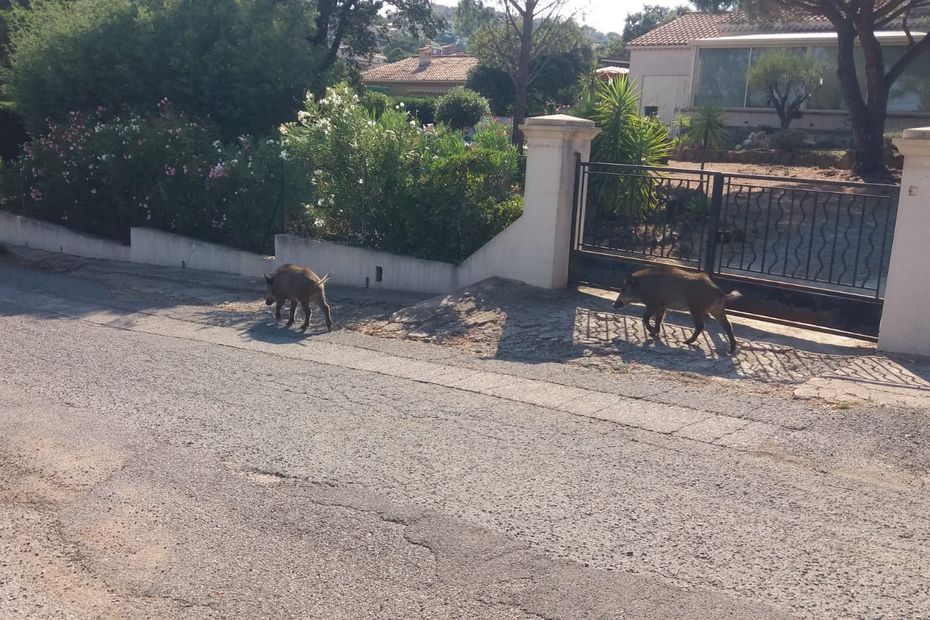Currently, the boars are hungry and thirsty. Sometimes they scavenge next to homes or help themselves directly from market gardeners. Testimonials from the inhabitants of the Var.
La marseillaise à pétanque 2022, 61st edition of the world –
In the summer, we sometimes have strange encounters. On returning home, around 1 a.m., Jacques Cartier did not expect to find himself faced with a strange trash can. A moving trash can. He soon noticed that a big boar had opened the trash bag and was eating the trash.
Cautious, he did not approach any further, he filmed the scene of his car and put it on YouTube: with the mention ” Enjoy your meal ! »
He explains : “I had never seen one before, this is the first time. I was in my parking lot… He was all alone, you always see several of them. He had good defenses. When I got out of my car, he was gone. It is the only unfenced place in the residence”.
Jacques Cartier lives in Draguignan, this nocturnal meeting did not surprise him too much: “It roams everywhere at night, near houses”.
Another evening, at the entrance to the city, he even came across a “beautiful fox”.
Currently, the boars are hungry and thirsty. So sometimes it does a lot of damage and they don’t just scavenge.
Valérie Fernandez Sibilli, market gardener in Fréjus noticed the same phenomenon on her farm. She relayed this “visit” in his fields on his Facebook account.
Her colleagues and peasant friends of Valérie face the same problem.
You should know that the wild boar is omnivorous, this means he eats everything.
In the village, they walk around during the day, they are no longer wild. At night, I saw 4 or 5 of them at Petit Défend, in a district of Saint-Raphaël when I go to deliver my baskets of vegetables,
remembers Valerie Fernandez.
–
Quite clever animals with their paws! In the photos, we notice that only the skin of the watermelon remains: ” they cut the watermelon in half and they eat the inside. For zucchini, they eat half.”
She adds: “They are not shy, we see them sailing from 9 am. I have dogs, they are not afraid of dogs. We live with. We are a bit at home too ”.
For Michel Level, assistant to the Office of Biodiversity in the Var, (OFB) the situation is not new. He does not note an upsurge this summer.
It’s continuous throughout the year, in Fréjus, Saint-Raphaël, they are near the houses. They are not shy, when they go to feed near humans, they are used to it.
Michel Level, Deputy at the Office of Biodiversity in the Var.
–
He receives several emails a day about their presence and adds: “there are people who feed them and others who think it’s good to kill them”.
–
To regulate the population in cities, fights must be organized. Only the wolfing lieutenants can be mandated by the prefecture.
Individual shots can also be authorized to protect crops, sometimes at the request of town halls.
In France, the wild boar population continues to increase. They would be 3 million in France, according to the figures of National Federation of Hunters.
A federation who is all the more worried about this proliferation as it is supposed to pay for the damage caused by game to farmers. This regulation dating from 1968 which should stop.
“It’s all year round, this summer it may be linked to the drought. But we have wild boar populations that adapt to all types of environments, they become urban or peri-urban”, observes Bruno Giaminardi, director of the Federation of Hunters of the Var.
No count exists for wildlife but for three years, the hunting tables have been increasing.
21,000 samples took place last year in the Var, reports the director of the federation: “The hunting season extends from 1 is June to March 31 of the following year. We set up levies on the municipalities where we have problems of damage ”.
The Var is located in the 5 departments of France where the most wild boars are found. The Biodiversity Office notices more problems on the coast than in the hinterland.
As it is one of the most wooded departments of France, wild boars easily find natural habitats and places to breed.
Even if sometimes they travel for miles and venture into the residences of the Côte d’Azur to plow lawns and gardens.
They thus sign their passage, the beginning of a turf war.
–



